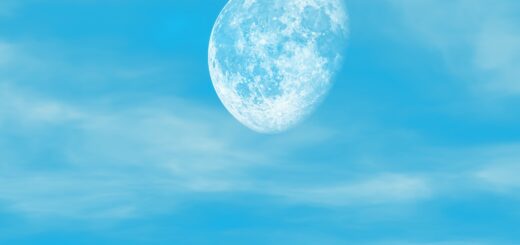NATURE OF MATTER
Solved exercise /notes for NATURE OF MATTER

Summary
We see several materials (objects) in our daily life and use a few of them. These materials are also called matters.The matter is made up of small particles. The smallest piece of matter is called particle.
Particles present in the matter are invisible. The matter is made up of very minute particles. Hence visible matter consists of invisible particles
How are the materials available in nature created?
Natural material is any product or physical matter that comes from plants, animals, or the ground. Minerals and the metals that can be extracted from them (without further modification) are also considered to belong into this category. Natural materials are used as building materials and clothing.
Properties of Matter
Matters have special properties
1.Matter occupies space: Pour the wheat flour or any other flour into a bowl, from a box. Again try to fill the bowl, so that the flour does not spill it shows that matter occupies space. Matter occupies space. A matter cannot occupy the place of another at the same time
2.Matter has mass
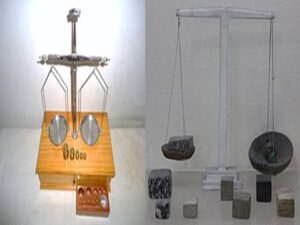
Take a weighing balance and note down the position of its needle. Put any material of 50 g in one pan and note down the position of the needle so that its changes its position this show that matter has mass.
The matter is the total sum of many particles. It has mass. The matter is made up of small particles. The total number of particles in a matter depends upon its weight. The material which occupies space and possess mass is called Matter.
States of matter
Depending upon the arrangement of the particles in a matter, different states of matter are recognized as
Solid:
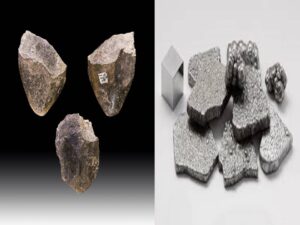
In solids, particles are densely and orderly arranged. Example : stone, iron etc.
Liquid:
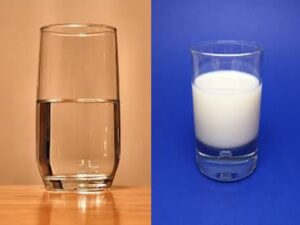
In liquids, the particles are loosely arranged when compared to solids. Example : water, milk etc.
Gas:

The particles are rarely arranged. Example : air, smoke etc.
Change in state of a matter.
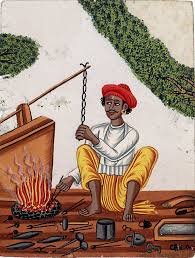
Matter changes its state from one form to another, due to heat. This is called as change in state of a substance.On heating, many solids change into liquid state. Effect of heat on a matter depends upon the level of hotness. On increase in the heat, solid changes into liquid, and liquid changes into gas. In the same way on cooling gas changes into liquid and liquid changes into solid.
Sublimation

when solids are heated they are converted first into liquid and then into vapour. Similarly, on cooling the vapours are converted first into liquids and then into solids. But some solids on heating directly convert into their vapour state and vice versa without passing through the liquid state and this is called sublimation.
Example : camphor, iodine.
Mass

Mass is the total quantity of matter cohering together to make an object or a substance. The mass
is measured in terms of weight. The SI unit of mass is kilogram (kg).
Density
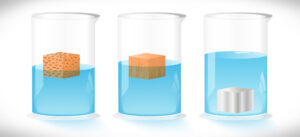
Density is the amount of mass contained in a unit volume.Generally density of the solid is more than that of the liquid and the density liquid is more than that of the gas.
The mass of an object (weight in g) in 1 cubic meter of its volume is called density. SI unit of density is kg/m3. (kilogram per cubic meter).
Pressure
When the blade is kept perpendicular to the water surface,it sinks since the mass is distributed over a smaller area.Therefore the consequence depends upon mass per unit area.This is called pressure. Pressure is the force exerted on a unit area.
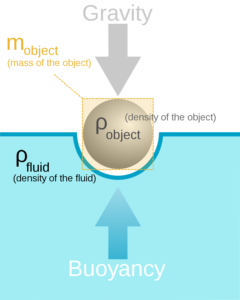
When an object is immersed in water, it exerts a downward force on water and the water in turn exerts an upward force or upward thrust on the objects. If the upward force exerted
on the object is more than the downward force, then the objects float. This upward force exerted is called buoyancy.
Exercise
- What is Matter?
Ans:Matter is anythings that occupies space and has mass.
2.State the properties of matter
Ans: Matter occupies space
Matter
3.How can your prove that matter occupy space?
Ans:Pour the wheat flour or any other flour into a bowl, from a box. Again try to fill the bowl, so that the flour does not spill it shows that matter occupies space. This shows that Matter occupies space.
4. Name three forms of matter?
Ans: The three forms of matter are solids, liquid and gases.
5.What are the factor on which density depends
Ans: Mass of each particles
Compactness of arrangement of particles
6. Mention the other compoents of matter
Ans: The other classification of matter are Elements compounds and mixtures



